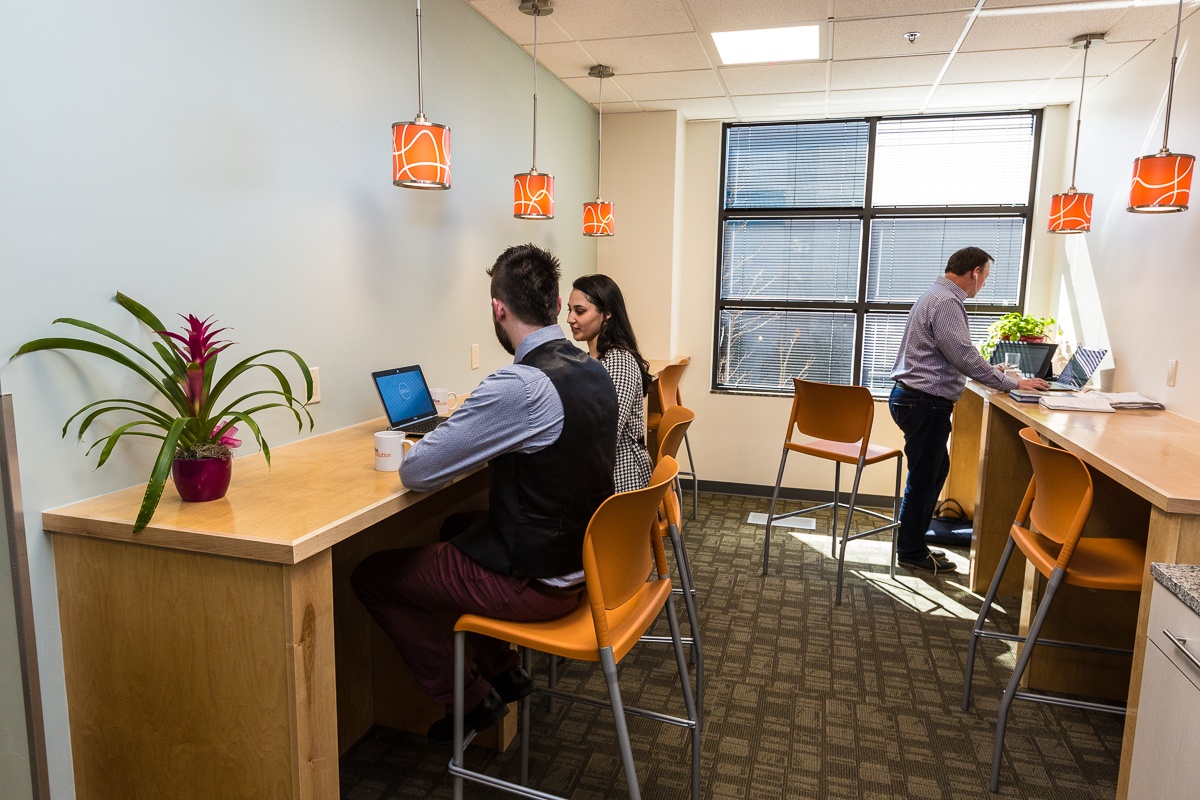
Coworking vs. Traditional Office Space: What’s the Difference?
Four Questions to help you Select the Best Space for Your Business.
The one thread that unites us all is time. It’s our most precious and costly resource. Consider how much time you spent setting up your office space, organizing furniture, training new staff, growing your client list and more. The hours are countless, aren’t they? These are challenges your brand has to overcome in order to grow.
So what’s the difference from running your small business at a coworking center or in a traditional office space? How much time are you spending deciding on which route makes sense for your business? Is this slowing down your productivity?
It turns out there are four immediate impacts your brand will feel depending on how you decide to run your shop. Let’s take a deeper dive into the main differences between coworking workspaces versus traditional office settings:
What Type Of Community Are You Growing?
- Coworking Space:
If setup properly, these spaces will already have an established, prospering, vibrant network of professionals already sharing desks and services. Connections between individuals and teams within a coworking space happen organically, as everyone is able to share insights and knowledge that foster collaboration and cross-pollination of ideas and professional networks. - Traditional Office:
In most cases, this will involve you and your team of about 2-3 professional “making it work”. Depending upon the profession, these offices are milked for their square feet, as inches are doubling down as base for several sectors of your brand. Ie your marketing department is also your HR desk. As a result, one of the most common concerns you’ll run into is a lack of recognition when teammates wear different hats.
How Fast Are Your Operating Costs Growing?
- Coworking Space:
In most spaces, operating costs, also known as overhead costs, are already built into the overall membership price. Coworking spaces typically have varying membership levels depending upon the type of office setting for which you and/or your team prefers — such as a private office, dedicated desk or a communal, shared workspace. Regardless of the setting, each membership plan already includes operating costs for high-speed internet, general office maintenance and cleaning. - Traditional Office:
As the owner of your company, you are typically paying for operating/overhead costs for common spaces, internet, cleaning, electricity, etc. In many cases, this translates to constantly looking at the bottom line and negotiating agreements, ensuring maximum revenue output while sacrificing the quality of the employee’s workspace. This may lead to downgrading or even eliminating some of the basic amenities today’s workforce relies on such as a shared kitchen.
What Level Of Time Commitment Did You Sign Away?
- Coworking Space:
Coworking spaces are built with flexibility in mind from the start. The coworking industry was born out of the need for today’s workforce to choose how and where they want to work, and perhaps more importantly when they want to work. Coworking operators give their members the freedom to choose when they plan to utilize the space based on overall business needs and affordability. That usually means members are not locked into long-term contracts (six months or more) and can reevaluate their membership level on a month to month basis. - Traditional Office:
You read the fine print. You signed that long-term lease that won’t expire for years. You’ve locked your growing company into rigid contracts with landlords that incorporated yearly rent increases and upfront security deposits. As a brand with an entrepreneurial spirit this almost goes against your nature.
What Amenities & Services Are You Paying For?
- Coworking Space:
As previously mentioned, coworking space operators factor in the costs of running the entire space and pass that overall expense down as a reduced and affordable package for each new member. Amenities within a coworking space typically include a shared receptionist and mail service. The coworking space usually includes a well-stocked beverages, communal meeting/conference rooms and phone booths for private calls. - Traditional Office:
As the owner, you are usually fronting the entire cost of staffing a reception area, lobby, and any communal areas for your team. You are paying for each amenity or service on an ad-hoc basis, and unlike coworking spaces, these expenses continue to dig a deeper hole for your company. You notice it is becoming increasingly inefficient to not allow staff members to cross-utilize resources to maximize your business from a personnel and financial standpoint.
How Much More Time Are You Willing To Spend Debating This?
For a small business, transitioning to a coworking space or traditional office can be one of the hardest choices you’ll have to make. Here’s a secret…it doesn’t have to be. At www.OfficeEvolution.com we understand what it takes to help brands of every size reach their goals and expand. Here’s another secret — the brands we see in our coworking spaces never spend time looking back at what could have been.